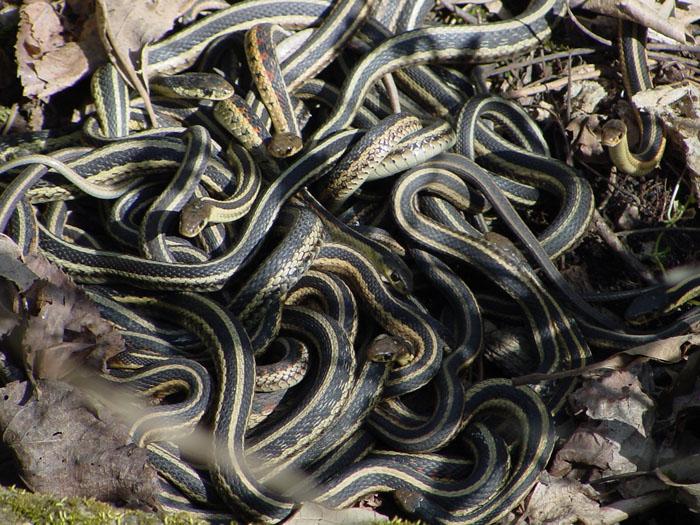As the weather gets warmer in southern Minnesota, reptiles are beginning to emerge from hibernation en masse. Three species of snake—the Common Gartersnake, Dekay’s Brownsnake, and Redbelly Snake—are frequently recorded in the Arb.
Though rattlesnakes can be found along the Mississippi River near the border with Wisconsin, all the snakes found in the Arb are non-venomous and pose no threat to humans. Some, like the diminutive Redbelly Snake which is currently becoming active in large numbers, can be handled with ease. Others, like the Gartersnake, grow larger and are typically more aggressive. However, even these will only bite if handled or cornered. It is a myth that snakes “chase” humans!
It may be surprising to see these reptiles emerging seemingly unscathed from months of bitter cold. Just like some mammals, snakes in northern regions hibernate—and they do it in enormous numbers. Some Gartersnake dens have been found housing over 5,000 individuals packed tightly together. In this species, mating occurs right after hibernation and is a truly bizarre spectacle; in some cases, hundreds of small males jostle desperately amongst each other to access a single much larger female. The females eventually move off to find a suitable nesting site.
In southern Minnesota, as elsewhere, snakes play an important ecological role. They prey on small rodents, which would quickly overpopulate without the top-down effect of snake predation and cause major problems for agriculture. In short, these slithery creatures are both harmless and highly beneficial, despite the negative reputation they have!










